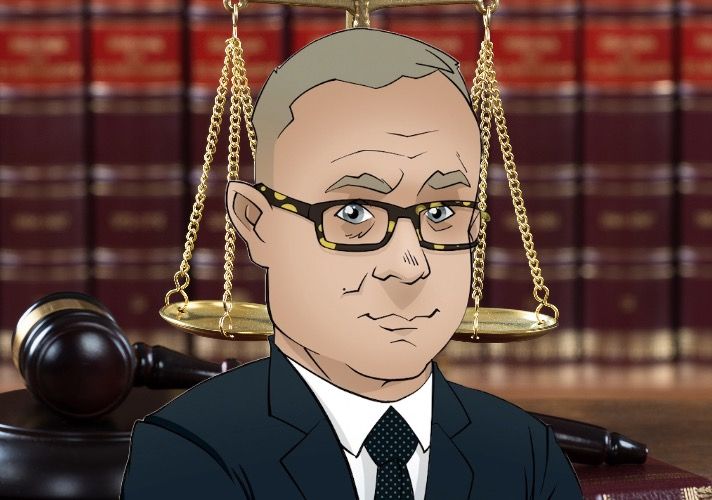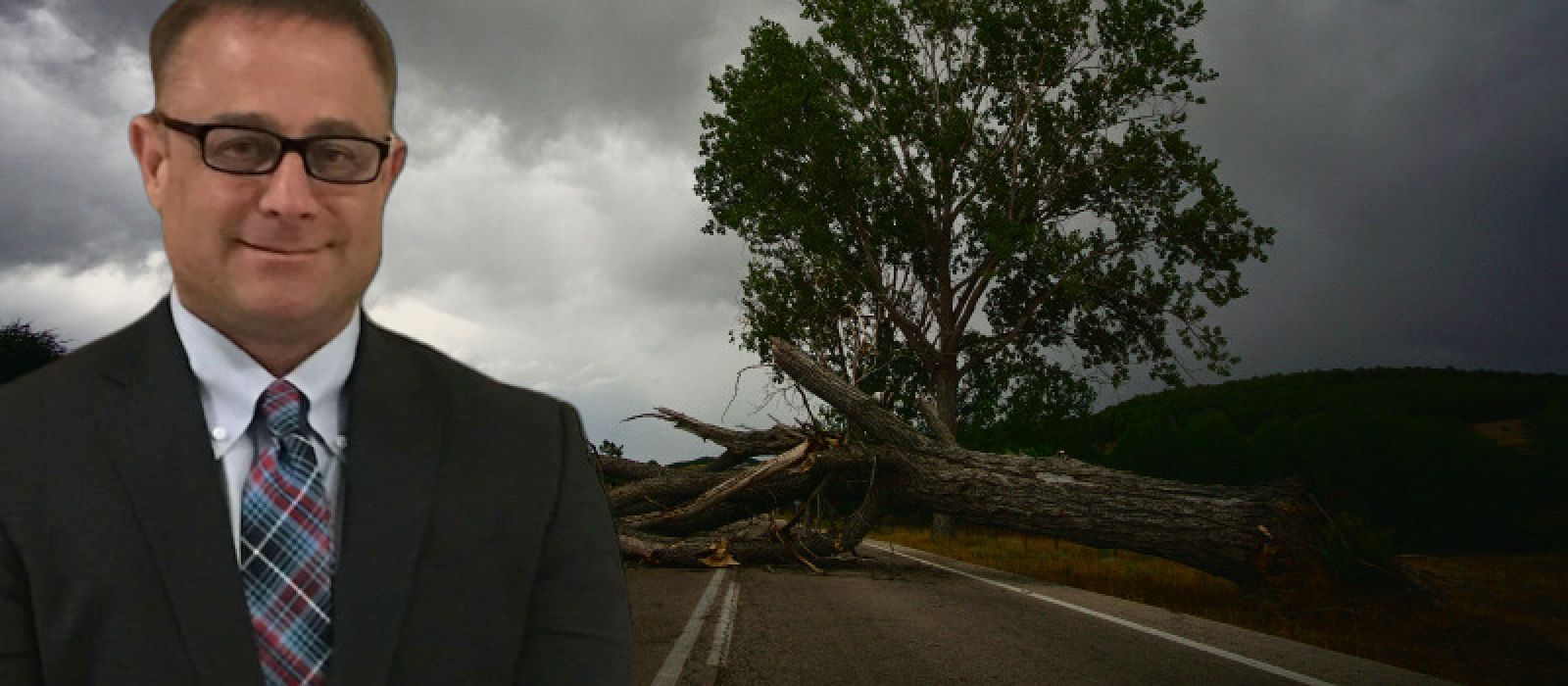
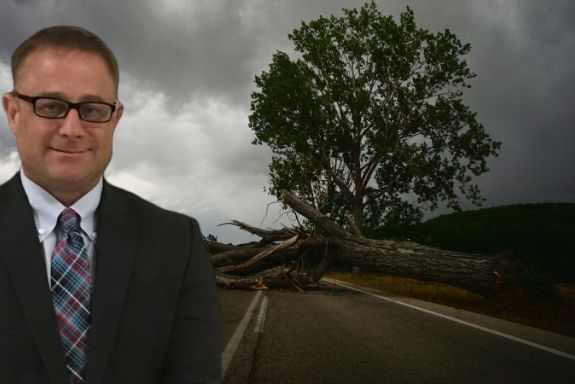
If we don’t win, you don’t pay.
NO WIN – NO FEE

ON CALL 24/7

U.S. Marine

Although falling trees are often seen as an inevitable result of storms or other weather events, it’s essential to understand that property owners are responsible for maintaining the trees on their land. Property owners must ensure trees, branches, and improper installation of tree grates, for example, do not pose a significant hazard to others. In cities like Los Angeles, where funding for tree maintenance has been reduced, injuries from falling trees or branches are unfortunately quite common. If a falling tree has injured you or a loved one, our experienced lawyers at Ehline Law Firm can assist you in holding a city, public entity, or individual property owner accountable for their failure to maintain trees.
With over a decade of experience in premises liability cases and other areas of personal injury, our dedicated tree injury lawyer team will guide you through filing a claim for your tragic losses when trees fall. Our superior, motivated personal injury attorneys are ready to hold your hand in the legal arena as you repair your body and finances. We will go the extra mile to negotiate your insurance claims or government claims with a mind towards obtaining an award of maximum financial compensation on your behalf from any liable wrongdoers. We can be reached anytime at (213) 596-9642 for a free consultation.
California Falling Tree Law History
Indeed, trees are an integral part of California’s diverse landscape, and understanding the laws surrounding them is important. When a falling branch causes harm to someone or their property, the issue of liability arises. People may collectively view timber as belonging to all of us. The legal ownership typically rests with the landowner on whose property the woody plant is growing.
Duty of Reasonable Care?
In California, some specific legal principles and rules govern tree-related liabilities. One fundamental principle is that a landowner has a duty to exercise reasonable care in the maintenance and upkeep of their forestry. Of course, this duty includes regularly inspecting trees for any unsafe conditions, including signs of disease, decay, or instability that could pose a risk of harm.
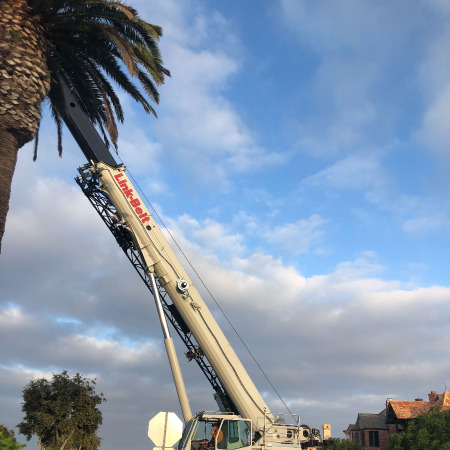
In our area, various types of trees have been known to cause injuries, including the Palm Tree, Pine, Crape Myrtle, Sweetgum, Mimosa, Oak, Birch, Ironwood, and the grand and majestic Eucalyptus trees, also known as Sugar Gum trees. Among these, Eucalyptus trees can pose significant risks.
In the past, during the 1970s, many Eucalyptus trees were planted in our region; however, some were not appropriately selected for our specific environment.
As a result, these plants may exhibit limb defects, which present significant safety hazards when left unattended. Issues such as root rot, limb decay, or decay within the tree’s core can lead to the development of large, heavy limbs that have the potential to break and fall at any moment, posing a serious risk to individuals and property in their vicinity.
Understanding the basics of arbor law can help landowners and neighbors navigate their rights and responsibilities regarding tree-related incidents. When tragedy strikes, consulting with a knowledgeable attorney specializing in property or personal injury law can provide guidance and ensure the applicable laws are applied correctly.
To make sure the at-fault party is found liable, seek legal advice tailored to your specific situation. Laws can vary, and legal interpretations may differ depending on the circumstances and jurisdiction. We would know we have handled many lawsuits like this, and we can help you prove any dangerous condition caused by negligence!
Falling and Flying Objects Statistics Show Major Health Concerns
Finding statistics dealing solely with falling trees and branch injuries/damages is difficult. Some websites cover workplace injuries caused by objects but not trees, etc. According to the California Office of Statewide Health and Planning (OSHPD), [modernly titled: California Department of Health Care Access] falling and flying objects have consistently remained the number two cause of serious injuries, particularly hidden head injuries, in Los Angeles County, California.
Here are some ways in which falling trees and branches in California can cause death or injury:
- Negligent tree maintenance: A reasonably prudent person who owns the property must maintain their bushes, shrubs, and woody plants and ensure they do not pose a significant risk to others. If a public or private property owner fails to inspect, maintain, or remove hazardous weald properly, and a person is killed or injured, it may be considered negligence.
- Failure to address known hazards: If a property owner or entity responsible for maintenance is aware of a risk but fails to take appropriate action to address the danger, negligence may cause the accident. This last winter was brutal, so it’s a good idea to walk the property and even use a flash light at night to look for problems to remedy.
- Improper tree removal or trimming: When woods are improperly removed or trimmed, instability or weakness can result, making them more prone to breaking, falling, and injuring people standing or walking nearby.
- Inadequate warning or precautions: Property managers and other entities must provide adequate warnings, signs, or barricades in known hazard zones. Their job is to leave the premises in a reasonably safe condition.
Injuries Caused by Falling Trees or Falling Tree Branches
Injuries caused by falling trees or falling tree limbs can vary in severity and may lead to significant physical harm and property damage. A branch on the ground or debris can lead to fall accidents. Tree grates can be open yet covered with debris from the wind. Imagine your leg or ankle falling inside, trapping your limbs as you jog or walk along a public sidewalk!
Here are some common injuries that can result from such incidents:
Eye Injuries
In 2015 alone, at least 2,295 reported eye injuries to children struck by flying or falling objects in Los Angeles County hospitals, including tree branches, like the heavy palm leaves pictured here. We have handled these eye injury claims, and we can assist you in finding the best physicians to help with your eyesight and balance in the future.
Traumatic Brain Injuries (TBI)
Falling branches, even a heavy fruiting tree branch, can strike a person’s head, potentially causing concussions, skull fractures, or other traumatic brain injuries. Concussions and traumatic brain injuries (TBIs) can result from various causes, including falls, motor vehicle crashes, being struck by an object, or assaults. Young children, older adolescents, and the elderly are at an increased risk to suffer permanent brain damage. This is due to their higher likelihood of experiencing a blow to the head and the potential for sustaining a concussion caused by their accident claim. TBIs can have long-term effects on cognitive function, memory, and overall quality of life, with lifetime medical bills. Ultimately, it can lead to a wrongful death.
Spinal Cord Injuries (SCI)
If a falling tree or branch impacts the neck or back, it can lead to spinal cord injuries, such as fractures or herniated discs, requiring chiropractic or surgical intervention. SCIs can result in partial or complete paralysis, affecting mobility and sensory functions.
Fractures and Bone Injuries
Falling trees or heavy branches can cause broken bones, including arms, legs, ribs, or pelvis fractures. Severe fractures may require surgery, immobilization, and extensive rehabilitation.
Soft Tissue Injuries
The impact from falling trees or branches can cause lacerations, bursitis, contusions, sprains, strains, and other soft tissue injuries. These injuries may result in pain, swelling, limited mobility, and potential long-term complications.
Other Internal Injuries
The force of a falling tree or branch can cause internal injuries, such as damage to internal organs, internal bleeding, or punctured lungs. Internal injuries may require immediate medical attention and surgical intervention.
Cuts and Abrasions
When tree limbs or branches fall, they can cause cuts, scrapes, and abrasions. These injuries may lead to scarring, infection, or other complications depending on their severity and location.
Emotional Distress
Surviving a tree-related incident can have lasting psychological effects, including anxiety, post-traumatic stress disorder (PTSD), and emotional distress. Witnessing or experiencing a traumatic event can significantly impact a person’s mental well-being.
It’s essential to seek medical attention promptly after a tree-related injury, even if symptoms appear mild initially, as some injuries may have delayed or hidden complications. Documenting the incident, collecting evidence, and consulting with an experienced personal injury attorney can help you understand your rights and pursue a legal claim for compensation for medical expenses, lost wages, pain and suffering, and other damages resulting in severe injuries. Our law firm can provide legal protection if you get hit by a flying or falling object.
Wrongful Death
Wrongful death caused by a falling thicket and its branches in California can occur due to various factors and circumstances.
Types of Tree Injury Accidents
Bicycle Rider Accidents Caused by Fallen or Low-Hanging Tree
Bike accidents caused by fallen or low-hanging tree branches can indeed pose a significant threat to cyclists, especially bicycle couriers. Even sidewalks near where Eucalyptus roots grow into the sidewalk can be a potential hazard to innocent passersby.
When a bicyclist encounters a fallen branch or low-hanging tree while riding, several scenarios can unfold:
- Rider Collision with a Fallen or Low-Hanging Tree Branch: Cyclists may collide if they cannot react or notice the fallen branch. This can result in the cyclist being thrown off balance and falling to the ground, potentially causing injuries to various body parts. Low-hanging branches can sometimes strike the cyclist’s face or neck, leading to facial lacerations, bruises, fractures, neck strains, concussions, more severe brain damage, cuts, and scrapes on the cyclist’s body. Particularly at risk are the arms, legs, and exposed skin areas. A significant impact to the head from a fallen branch or low-hanging tree can result in traumatic brain injuries. These injuries can vary in severity and may require medical attention and treatment to reduce pain, discomfort, and the risk of infection.
Municipalities and property owners need to hire a certified arborist to make inspect trees to mitigate the risk of such accidents. Certified arborists can also be compensated to regularly maintain trees along bike paths and roadways, ensuring that branches are pruned, and low-hanging trees are trimmed to provide safe clearance for cyclists. Additionally, cyclists should remain vigilant and cautious while riding, scanning the road ahead for any potential obstacles, including fallen branches or low-hanging trees.
Tree Trimming Rule
In the 1994 case of Booska v. Patel, a California appellate court introduced a requirement into the trimming rule that neighbors must not unreasonably cause harm to the tree when trimming its overhanging limbs or extending roots. In this particular case, the roots of a tree had grown to the point of causing the adjacent sidewalk to buckle. When the neighbor hired a contractor to trim the roots, the entire root system along the property line was severed, rendering the tree unstable and unable to survive. The court determined that a neighbor’s right to trim branches and roots was not absolute and that the consequences to both parties (a serious injury to a plaintiff) must be considered.
Limitations?
It’s important to note that there are limitations to the trimming rule. While branches and roots can be trimmed up to the property line, any removal or damage that extends beyond the property line without the owner’s consent can make the trimming neighbor liable for damages, which can be two to three times the value of the actual damages. Even if the trimming remains on the right side of the property line, liability can still arise if the tree is somehow damaged. Therefore, it is advisable to work out tree trimming arrangements with your neighbor or hire a professional knowledgeable about trees and boundary rules.
Furthermore, it’s crucial to understand that a neighbor is entitled to trim portions of a tree that extend into their own yard but is not allowed to enter the adjoining property where the tree is located to trim or cut it down. Cutting down, harming, or killing a neighbor’s tree, even unintentionally, can result in criminal penalties, including a fine of up to $1,000, a jail term of up to six months, and potential civil damages.
Recent News Examples of Falling Tree Injuries and Deaths
- Example 1: On Monday, February 20, 2023, a woman named Maria De La Luz Cruz was inside a parked Ford Explorer at Pearson Park in Anaheim when a tree fell and caused her death, crushing her inside.
- Example 2: On January 5, 2023, a redwood tree falling onto a double-wide mobile home resulted in the death of a 2-and-a-half-year-old boy.
- Example 3: On November 29, 2021, a tragic incident occurred in Encino where a man lost his life, and two other individuals were rescued after a large tree crashed into a home.
- Example 4: On March 4, 2021, Kahlil Gay of Corona tragically lost his life in Northern California when he was struck by a fallen evergreen.
- Example 5: “Damaged cars sit beneath a fallen tree at the El Camino Shopping Center on Mulholland Drive in Woodland Hills on Sunday.” (LA Times)
Similarly, tall palm branches can fall on the heads of people at parks and schools that remain open despite heavy winds and rains. All this growth, followed by drought conditions, can cause falling branches in an adjacent parking lot, residence, or road shoulder.
Failure to purchase optional comprehensive car insurance instead of the standard minimums means you will end up paying the damage and your regular insurance payment as you seek compensation from the land’s owner.
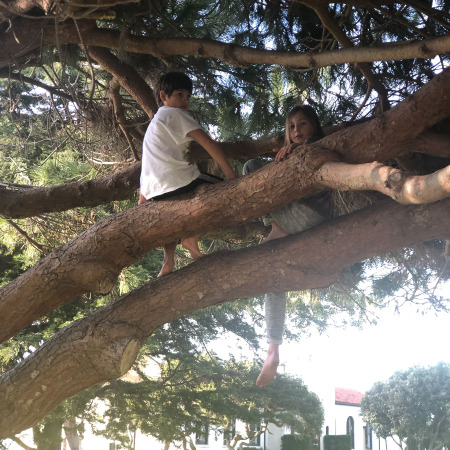
How Does the Court Decide if the Tree Were Hazardous or Dangerous?
When determining if a tree is hazardous, courts consider various factors, including the knowledge and actions of the tree’s owner.
Here are some key points to understand:
- Actual Knowledge: The court examines whether the property owner had a basic knowledge of any risks or hazards associated with the tree. This means the owner was aware of specific conditions or defects that could lead to harm. For example, if the owner knew that a tree was diseased, structurally weak, or had dead branches, it could be considered a factor in assessing liability for failing to act reasonably prudent.
- Good Knowledge: In addition to actual knowledge, the court also considers whether the property owner should have had a good understanding of the hazardous condition of the tree. This involves evaluating whether a reasonably prudent property owner in the same circumstances would have been aware of the risks posed by the tree. Factors such as regular property inspections or apparent signs of decay or instability may be considered.
- Duty to Inspect and Maintain: Property owners generally have a duty to inspect and maintain their trees, ensuring that they do not pose an unreasonable risk of harm to others. The extent of this duty may vary depending on factors such as the tree’s location (urban, rural, etc.), the type of property (residential, commercial, etc.), and local regulations or ordinances.
- Remedial Actions: Property owners are expected to take reasonable steps to address the issue if they know a hazardous tree condition. This may involve trimming or removing dead or diseased branches, treating tree diseases, or removing the entire tree if necessary to mitigate the risk.
The court will consider all the available evidence, including expert opinions and testimony, photographs, maintenance records, and witness statements, to determine if the property owner fulfilled their duty of care in maintaining the tree. Ultimately, the decision rests on whether the owner knew or should have known about the hazardous condition and whether they took appropriate actions to prevent foreseeable harm.
It’s important to note that laws and legal standards can vary by jurisdiction, so consulting with a local attorney specializing in premises liability or personal injury cases would provide specific guidance based on the applicable laws in your area.
Who is Responsible for Fallen Tree Damage in California?
When the trunk crossed the property lines, which had not grown so much after starting entirely at the opposite end, the trees are part of the same land, and none of them may remove any branches.
In California, determining responsibility for fallen grove damage depends on various factors, such as the tree’s location and the circumstances surrounding the incident.
Here are some general guidelines and numerous factors involved:
Private Property Owners
Suppose a tree falls from private land, including a residence or a commercial building, onto a neighboring property. In that case, the owner of the property where the tree was located initially is typically responsible for any resulting damage. Property owners must inspect and maintain their trees to prevent foreseeable harm.
Who is liable when a tree falls on a neighbor’s property in California?
In California, if a copse of hardwood falls from one neighbor’s property onto another neighbor’s property, the general rule is that the owner of the property where the scrub was rooted is responsible for any resulting damage. This principle is known as the “Neighbor Law.”
According to the California Civil Code Section 833, the owner of a tree is responsible for keeping it properly maintained and preventing it from causing harm to neighboring properties in a timely manner. Our experienced attorneys have dealt with these cases, and we can also help you with a high-risk private or public land claim.
Roots in Common?
CCP Sec. 834, “Trees whose trunks stand partly on the land of two or more coterminous owners belong to them in common.” When the trunks stand partly on the land of two or more coterminous (adjacent) owners and share tree roots in common, each owner has a shared ownership interest in the trees and their proper maintenance. Hence, both become responsible for making decisions collectively regarding the trees located or encroaching in both areas. This principle helps ensure that disputes over trees with overlapping land boundaries will share property owner liability in case of injury victims.
Expected or not, landowners must regularly inspect and ensure these plants, like any other grown palm trees, can hold their weight. They must look for any signs of neglect, including decay, disease, or instability, that could make them a hazard. Suppose the owner fails to exercise reasonable care in maintaining the forest underwood, and it falls onto a neighbor’s property, resulting in damage to structures, vehicles, or other property. In that case, they may be held liable for property owner negligence due to their actual or constructive knowledge about improperly maintained trees.
Exceptions to Section 833 Tree Injury Cases
It’s important to note that there are exceptions to this rule. For example, if the tree is healthy and a large tree branch falls due to an act of nature, such as a severe storm or lightning strike, the owner may not be liable for the serious personal injuries in our examples.
Suppose tree trunks stand wholly on a property owner’s land, regardless of whether the tree’s roots extend onto an adjoining property. In that case, the property owner where the tree stands wholly must inspect and maintain trees to minimize the risk of injury. Property owners have a legal duty to keep the location correctly.
Additionally, if the tree owner can prove that the neighbor contributed to the tree’s instability or negligently caused it to fall, shared liability or a shift in responsibility for any personal injury caused may occur in a tree-related injury.
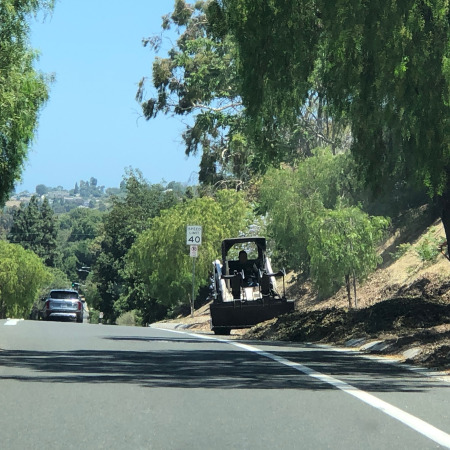
Suppose you find yourself in a situation where a tree has fallen from a neighbor’s property and caused damage to your property. In that case, it’s advisable to consult a qualified attorney specializing in a property line or neighbor dispute. They can evaluate the specific circumstances of your case and guide the applicable laws and potential avenues for seeking compensation for a severe injury. Let our very best tree injury lawyer help you with every home option after being hurt due to an unfortunate tree limb case.
Public Property Owners
Suppose a copse of spruce falls from public property, such as a park or along a city street, onto a car or a pedestrian in moderate winds. In that case, the responsibility for damage caused by the fallen tree may fall on the public entity responsible for adequately maintaining certain trees on the property.
Government or City, etc.
This could be a city, county, or other government agency. However, liability may vary depending on prior notice of the tree’s hazardous condition and whether the public entity took appropriate measures to address the risk. Winds and torrential rain in Southern California have resulted in numerous trees falling on houses, cars, and roadways. Unfortunately, the government was not adequately prepared to handle these situations.
Los Angeles Department of Recreation and Parks
The severe weather conditions have increased the risk of falling branches or trees. Lack of preparedness has likely contributed to the extent of the damage and potential dangers to public safety. Tree branches can cause issues in public areas such as parks and roadways. They can obstruct driver visibility, block road signs, and pose a risk of falling. Municipal authorities and park management must prioritize regular service and inspection to mitigate these risks and ensure public safety.
In Los Angeles and its surrounding areas, numerous parks boast large trees, including Cypress Park, Elysian Park, Hermon Park, Griffith Park, Penn Park, Topanga Park, and Sycamore Park. Additionally, other parks are maintained by the Los Angeles Department of Recreation and Parks, Glendale, Whittier, Beverly Hills, Calabasas, and beyond.
Maintaining a proactive approach to tree care, including regular trimming and removal of hazardous branches, can help Los Angeles prevent accidents and ensure its park visitors’ and road users’ safety from falling branches or other objects. Public authorities and park management should know these responsibilities and allocate resources to maintain the trees in these public spaces.
The government must assess and improve its readiness to respond to such weather events to mitigate the risks and ensure the community’s safety. In any case, their improper maintenance as the property owner responsible subjects them to legal liability.
Natural Conditions
In some cases, if timber falls due to natural causes, such as a severe storm or strong winds, and there is no reason to suspect that the tree is a hazard, it may be considered an act of nature. In such situations, liability may not necessarily be attributed to a specific party. Suppose a landowner knows or should have known about a hazardous condition posed by a tree and fails to take appropriate action to address it. In that case, they may be held liable for any resulting harm or property damage. This can include situations where a tree falls and injures someone or causes damage to neighboring properties.
It’s important to note that liability can also depend on the case’s specific circumstances. For example, suppose a landowner hires a professional tree maintenance service and entrusts them with the care of their trees. In that case, the responsibility for tree-related issues may extend to the hired service provider.
It’s important to note that each case is unique, and liability can be complex. Consulting with an experienced personal injury attorney specializing in premises liability and property damage cases can provide you with specific guidance based on the details of your situation. They can help determine who may be responsible for the damage and assist you in seeking and receiving windfall-like compensation for your losses.
What Are Some Prohibited Trees in Northern California?
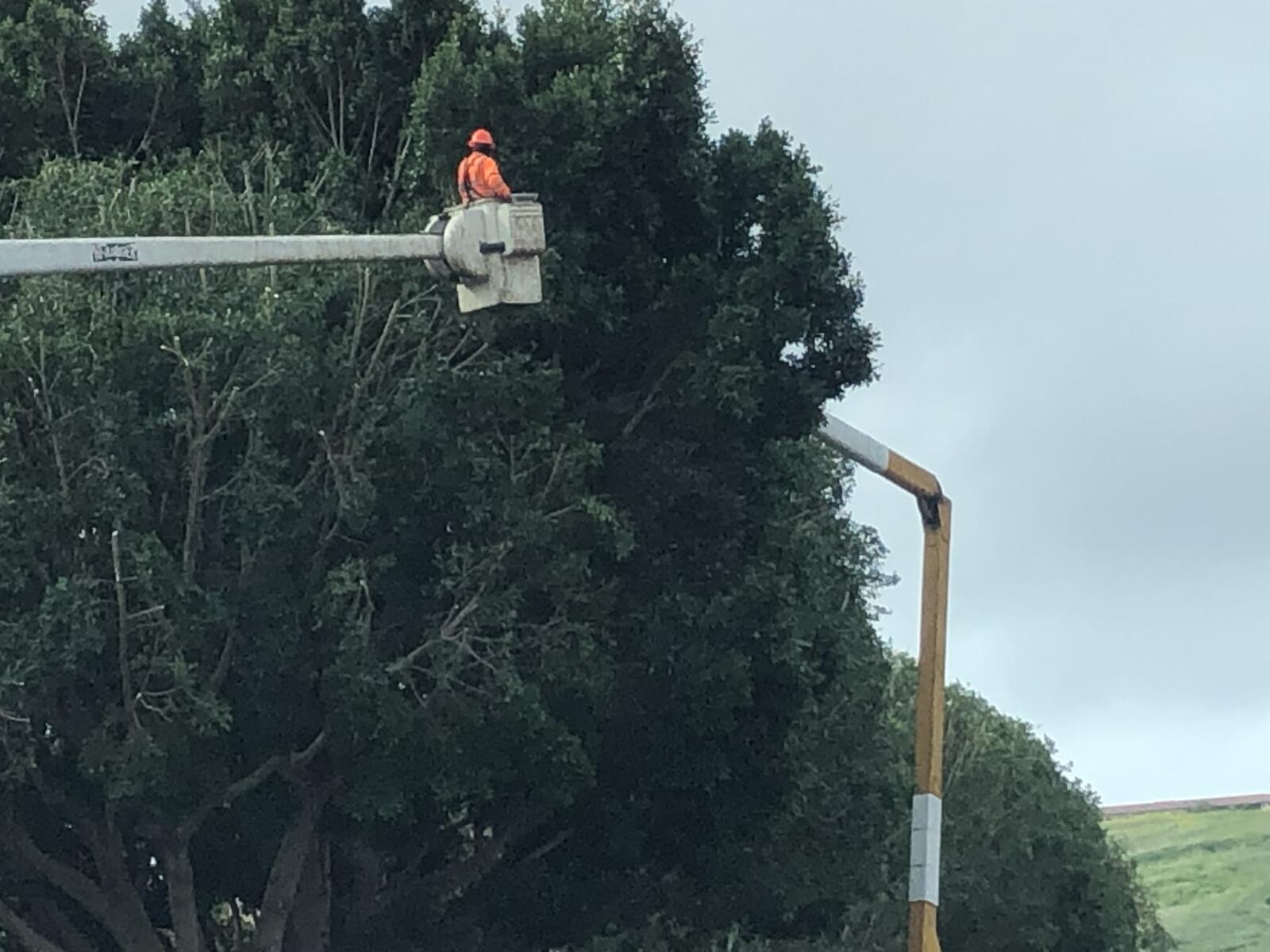
In some areas of Northern California, specific regulations are in place regarding planting certain tree species to ensure safety and security from fire, destruction of sidewalks, structures, invasive species of bugs, etc. For instance, in the City of El Cerrito, tree species are prohibited from being planted due to their tendency for rapid growth in height when mature, dense foliage, shallow root structure, and high flammability.
It’s worth noting that the specific list of prohibited trees may vary slightly from one municipality to another within the region. However, obtaining comprehensive information about these prohibited tree species can sometimes be challenging. Always seek out local resources, including official municipal websites, or consult with local authorities like building inspectors, city arborists, forestry, or environmental services departments. They can provide citizens and lawyers with more accurate and up-to-date information regarding tree bans in specific metro locations.
For landlords and property owners seeking to avoid lawsuits, staying informed about these regulations is crucial to ensure compliance and contribute to the overall safety and well-being of the community.
Proving a Premises Liability Claim for A Falling Tree/Branch
During severe storms or weather events, it is not always possible for property owners to prevent trees from being uprooted. However, property owners must maintain their trees and ensure their health to minimize the risk of injuries caused by falling branches and debris.
For instance, if the owner of an apartment complex knew about a dead tree but failed to remove it, and a tree branch fell on someone, that owner could be held liable for severe traumatic brain injuries under California law. Even car accidents caused by falling tree branches can be attributed to negligence on the part of the property owner. Trimming branches and ensuring tree grates are safe is part of the duty to inspect and repair.
When proving a premises liability claim, you will likely need to establish the following:
- A dangerous condition on the property, such as a dying tree, posed an unreasonable risk of harm when the tree fell.
- The property owner knew or should have known about the danger.
- The property owner failed to take reasonable action to warn guests about the problem.
- The dangerous condition directly caused the plaintiff’s injury.
Damages You or a Loved One Can Pursue Through a Falling Object Injury Claim
If a falling object has injured you or a loved one, you may be able to pursue various damages through a personal injury claim. The specific damages you can follow will depend on the circumstances of your falling tree branch lawsuit and the applicable laws in your jurisdiction. Here are some common types of damages that can be sought in a falling object injury claim:
- Medical Expenses: You can seek compensation for all medical costs associated with your injury, including hospital bills, doctor visits, surgeries, medications, rehabilitation, and any future medical expenses related to your injury.
- Lost Wages: If your injury has caused you to miss work or has impacted your ability to earn a living, you can pursue economic damages for your lost wages, including both past and future income losses.
- Pain and Suffering: Falling object injuries can cause physical pain, emotional distress, and reduced quality of life. You may be entitled to compensation for the physical and emotional pain you have endured and will continue to experience due to your injury.
- Disability and Disfigurement: If the falling object injury has resulted in a permanent disability or disfigurement, you may be eligible for additional compensation to account for the long-term impact on your life, such as loss of enjoyment of life or the need for ongoing assistance and accommodations.
- Property Damage: In some cases, falling objects can cause damage to personal property, such as a vehicle or other belongings. You can seek compensation to repair or replace the damaged property.
- Punitive Damages: In rare cases where the responsible party’s conduct is deemed particularly reckless or intentional, punitive damages may be awarded to punish the defendant and prevent injury in the future.
To pursue these damages, gathering evidence to support your claims is crucial, such as medical records, photographs of the scene, witness statements, and documentation of financial losses. Consulting with a personal injury attorney experienced in falling object cases can help you navigate the legal process. This is a legal expert who can help maximize the chances of recovering the financial compensation a plaintiff deserves for his or her injuries.
Statute of Limitations for Filing a Lawsuit in the Court of Law
In Los Angeles, California, the statute of limitations for filing a personal injury lawsuit, including cases involving falling trees or tree branches, is generally two years. You have two years from the incident date to file a lawsuit seeking compensation for your injuries or damages.
It’s important to note that there may be exceptions or variations to this general rule, depending on the specific circumstances of your case. For example, if the incident involves a government entity or property, there may be shorter notice periods (generally six months) or other requirements that must be followed.
To ensure you meet all the necessary deadlines and requirements, consulting with a qualified personal injury attorney familiar with the laws and regulations in Los Angeles is highly recommended. They will be able to provide you with accurate and up-to-date information based on the specifics of your Los Angeles area case.
Why Hiring A Trial Lawyer is Crucial To Your Falling Tree or Branch Case
Hiring a trial lawyer is crucial to your falling tree or branch case for several important reasons:
- Legal Expertise: A trial lawyer specializing in personal injury cases, specifically those involving falling copse or branches, will have the necessary knowledge and expertise to navigate the complex legal landscape. They understand the relevant laws, regulations, and precedents that apply to your case and can effectively build a solid legal strategy on your behalf.
- Case Evaluation: An experienced trial lawyer can evaluate the specific details of your case to determine its strengths and weaknesses. They will conduct a thorough investigation, gather evidence, and consult with experts if necessary to build a solid foundation for your claim. This evaluation will help assess the potential value of your case and guide the legal approach.
- Negotiation Skills: Many personal injury cases, including those involving falling trees or branches, are resolved through negotiation rather than going to trial. A skilled trial lawyer has excellent negotiation skills and will fight for your best interests during settlement discussions. They will strive to secure a fair and comprehensive settlement that adequately compensates you for your injuries and damages.
- Courtroom Experience: If your case proceeds to trial, having a trial lawyer on your side is invaluable. Trial lawyers have extensive experience presenting cases in front of judges and juries. They are skilled at courtroom procedures, presenting evidence, cross-examining witnesses, and delivering persuasive arguments. Their experience increases your chances of a successful outcome in the courtroom.
- Advocacy and Support: Dealing with a falling tree or branch injury can be physically, emotionally, and financially challenging. A trial lawyer is your advocate, providing guidance, support, and reassurance throughout the legal process. They will handle all communication with the opposing party, insurance companies, and others, allowing you to focus on your recovery.
A Track Record of Success With Falling Trees
At the Ehline law offices, we have achieved substantial financial recoveries for clients injured due to the property owner’s negligence. While past success does not guarantee future results, we are committed to fighting tirelessly to help you obtain compensation for your medical expenses, loss of income, emotional damages, and other losses caused by negligence.
Michael Ehline, a partner at Ehline Law Firm, was crucial in demonstrating that the City failed to fund or maintain its property adequately.
What Are Some Signs That a Tree Might Be in Danger of Falling?
There are several signs that a tree might be in danger of falling.
It’s essential to be vigilant and look out for the following warning signs:
- Leaning or Tilting: A tree noticeably depending on one side could indicate root damage or instability. A significant lean suggests that the tree’s structural integrity may be compromised, increasing the risk of it falling.
- Cracks or Splits: Visible cracks or splits in the trunk, branches, or significant limbs of a tree can indicate internal decay, weakness, or structural instability. These weakened areas can make the tree susceptible to failure, especially during high winds or storms.
- Dead or Dying Branches: Dead or dying branches within a tree’s canopy can indicate poor tree health. These branches can become brittle and easily break off, posing a risk of falling onto people or property below. Regularly inspect the tree for any signs of dead or decaying branches.
- Fungus or Decay: The presence of fungi, mushrooms, or visible decay on a tree’s trunk or roots can indicate internal rot or decay. This can significantly weaken the tree’s structure and increase the likelihood of it falling.
- Root Problems: Unstable or damaged root systems can compromise a tree’s stability. Look for signs such as heaving soil, exposed roots, or damage caused by construction or changes in the surrounding landscape. Shallow or weak root systems are particularly concerning and are often governed under local ordinances in the Los Angeles area.
- Canopy Thinning: A noticeable reduction in the density of a tree’s foliage, also known as canopy thinning, can be a sign of declining health. When a tree is in poor health, it may be more susceptible to failure and the potential for falling. As noted, adjoining landowners may have some legal liability here.
- Previous Damage: Trees previously damaged by storms, lightning strikes, or other factors may have weakened structures that make them more prone to falling in the future. Assess the extent of past damage and consult with an arborist or tree expert for an evaluation. Ask the City or an investigator if they think the public was given an adequate warning.
Suppose you observe any of these signs or have concerns about the stability of a tree on your property or in your vicinity. In that case, seeking professional advice from an arborist or tree care specialist is advisable. They can assess the tree’s condition, identify potential hazards, and recommend appropriate actions to promptly mitigate the risk of falling.
Additional Considerations to Keep in Mind
When dealing with tree-related issues, there are a few other factors to be aware of:
- Falling Debris: The responsibility for natural debris, such as fallen leaves, twigs, or other materials from a tree, typically lies with the owner of the property where it lands. These materials are considered natural occurrences and are treated similarly to other debris that may cause damage, such as clogged gutters.
- Fruit or Nuts: If a neighbor’s fruit tree extends over your property, the fruit on the tree generally belongs to your neighbor, even if it hangs on your side. You would need your neighbor’s consent to prune or claim ownership. However, any fruit falling from the tree onto your property is yours.
- View Restrictions: Some communities have ordinances to protect neighbors’ views. In one case, a restriction on fence height was interpreted to apply to a line of trees, ensuring that no one in the world obstructed neighbors’ views.
Neglected underwood with significant safety hazards, such as root rot, limb decay, or decay in the heart wood, can pose considerable falling branch dangers. The presence of these conditions can lead to the formation of large, heavy limbs that may unexpectedly detach from the thicket. As a result, numerous lawsuits have been filed over the years due to incidents involving poor landscaping and pedestrian injuries.
If you are uncertain about a tree-related issue, it is advisable to consult a real estate lawyer with expertise in this area. An experienced attorney can provide guidance and help you navigate any legal matters that may arise. For more comprehensive information on real estate laws or obtaining fair compensation, call (213) 596-9642.
Request a Free Consultation With a Tree Injury Lawyer Today
Are you seeking compensation for medical treatments and pain and suffering for a case in the Los Angeles area? Do you need a top lawyer to represent your interests? When you contact us to discuss your case, our first step will be determining liability and assessing your chances of financial recovery. We have the resources to investigate your devastating accident and gather necessary evidence in your favor, including full-time on-staff investigators.
Whether you or a member of your family were injured by a falling tree in Los Angeles or a broken tree branch elsewhere in the state, we may be able to assist. Ask us about our zero fee guarantee as we ensure the at-fault parties for your tree accident are held accountable to the fullest extent of personal injury law. Call (833) LETS-SUE or contact us online to schedule a free consultation and discuss your legal options. We are ready to speak with any victim 24/7 to help them recover the compensation they deserve.
Citations:
- Los Angeles County Department of Public Health, Injury, and Violence Prevention Program www.publichealth.lacounty.gov/ivpp
- Centers for Disease Control and Prevention Traumatic Brain Injury Resources www.cdc.gov/TraumaticBrainInjury
- Facts about Concussion and Brain Injury www.cdc.gov/concussion
- Concussions in Sports Information www.cdc.gov/concussion/sports
- Concussion Diagnosis and Management Resources for Clinicians www.cdc.gov/concussion/clinician.html
- Safe Kids USA Sports Safety Guide for Schools, Coaches, and Parents www.SafeKids.org/sports
- 4th International Conference on Concussion in Sport Consensus Statement http://bjsm.bmj.com/content/47/5/250.full.pdf+html
- “Inglewood residents express concerns about losing tree shade.” ABC7. Retrieved June 4, 2023, from https://abc7.com/inglewood-tree-chopping-trees-new-in-ingelwood-cutting-down/11741020/.

